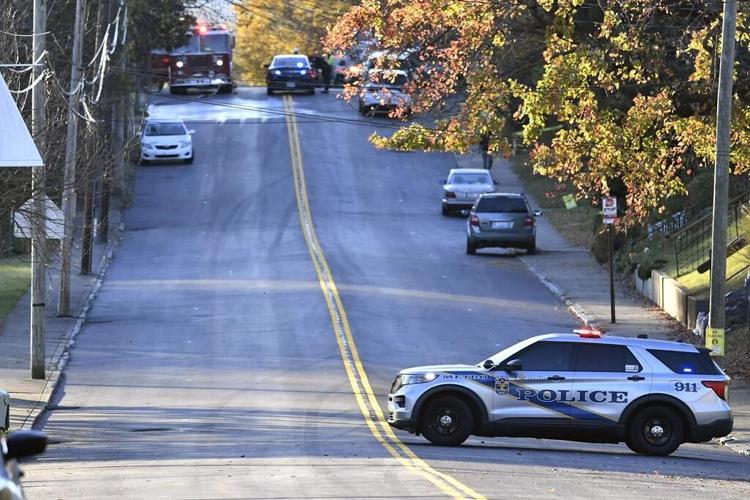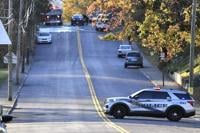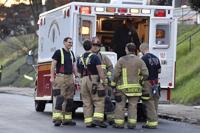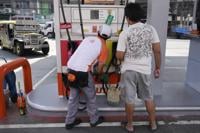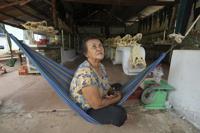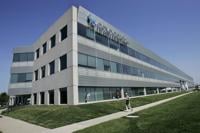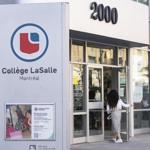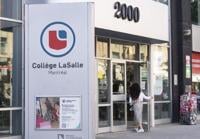LOUISVILLE, Ky. (AP) — At least 11 employees were taken to hospitals after an explosion on Tuesday at a Louisville, Kentucky, business that produces natural color for foods and drinks.
The explosion, which happened around 3 p.m. at Givaudan Sense Colour, knocked out windows and blew in doors in nearby homes and businesses. Responding firefighters rescued and evacuated many people from inside the building, including some with life-threatening injuries, Louisville Mayor Craig Greenberg said in a statement Tuesday night.
News video footage showed an industrial building with the middle section burned and partially collapsed. The cause remained unknown.
The University of Louisville Hospital treated seven of the people injured and two of them were in critical condition, said Dr. Jason Smith, chief medical officer for University of Louisville Health. Hospital officials activated decontamination procedures for the victims, a process that involves removing their clothing and all the chemicals on them and then taking them for evaluation and treatment, Smith said. Other patients were taken to Baptist East Hospital, Greenberg said.
A Givaudan spokesperson didn’t immediately respond to an email seeking comment Tuesday night. No one answered the phone at the company’s Louisville office, and a man who answered at the Port Washington, Wisconsin, office declined to comment.
Greenberg said officials spoke to employees inside the plant. “They have initially conveyed that everything was normal activity when the explosion occurred,” he said.
Greenberg said officials have accounted for everyone who was working at the plant at the time of the explosion.
Louisville Fire Chief Brian O’Neill said air monitoring began immediately after the explosion and “nothing at this point has ever shown any type of chemical problems in the air in this entire region.” O’Neill also said that fire officials “don’t precisely know yet exactly what types of leaks may happen or may be ongoing,” but he urged residents to stay calm.
Louisville Metro Emergency Services had urged people within a mile of the business to shelter in place, but that order was lifted about two hours after the explosion.
The Louisville Fire Department was leading the investigation as of Tuesday night with help from state and federal partners. A reconstruction team from Bureau of Alcohol, Tobacco, Firearms and Explosives was headed to Louisville to help determine the cause of the explosion.
The blast knocked out several windows in a nearby business district, and many were boarded up as night fell.
Steve Parobek was cleaning up glass around the fourplex apartment he lives in just a block away from the plant. His kitchen window blew out from the blast while he was at work.
“You never really expect this to happen in your neighborhood,” Parobek said outside his apartment.
He said he arrived home and found his cat safe and used two pizza boxes and some duct tape to cover his window as temperatures dropped steadily Tuesday night. The building had 10 windows blown out from the blast.
“I lucked out; I only had one," he said.
Patrick Livers lives in a neighborhood immediately across the railroad tracks from the plant. He was at work when his mother, who had picked up his children from school and was bringing them home, called him via FaceTime to say his home had been damaged by the explosion.
“I was like, ‘What are you talking about?’ Then she showed me the video. I was like, ‘oh you’ve got to be kidding me," he said.
Livers said no one was home at the time of the explosion. He said the explosion blew out windows up and down his street.
“The house is still standing. It’s just structural damage. If it was on a wall, it’s on the floor,” he said. “All the neighbors’ windows busted out, doors blown in. It looked like a small tornado went off inside the house.”
In April 2003, an explosion at the same location killed a worker at a caramel-coloring plant owned by D.D. Williamson & Co. Givaudan acquired the plant from D.D. Williamson in 2021.
Federal investigators determined a pressure relief valve on a tank had been removed when the company moved the tank to its Louisville plant in 1989. The tank exploded because there was no relief valve, according to a report from the Chemical Safety Board.
The blast killed Louis C. Perry, 44, of Louisville, who investigators said was standing next to the 2,200-gallon tank when it exploded. Nearby residents also were evacuated after the explosion.
___
Associated Press journalists John Raby and Bruce Schreiner contributed to this report.

